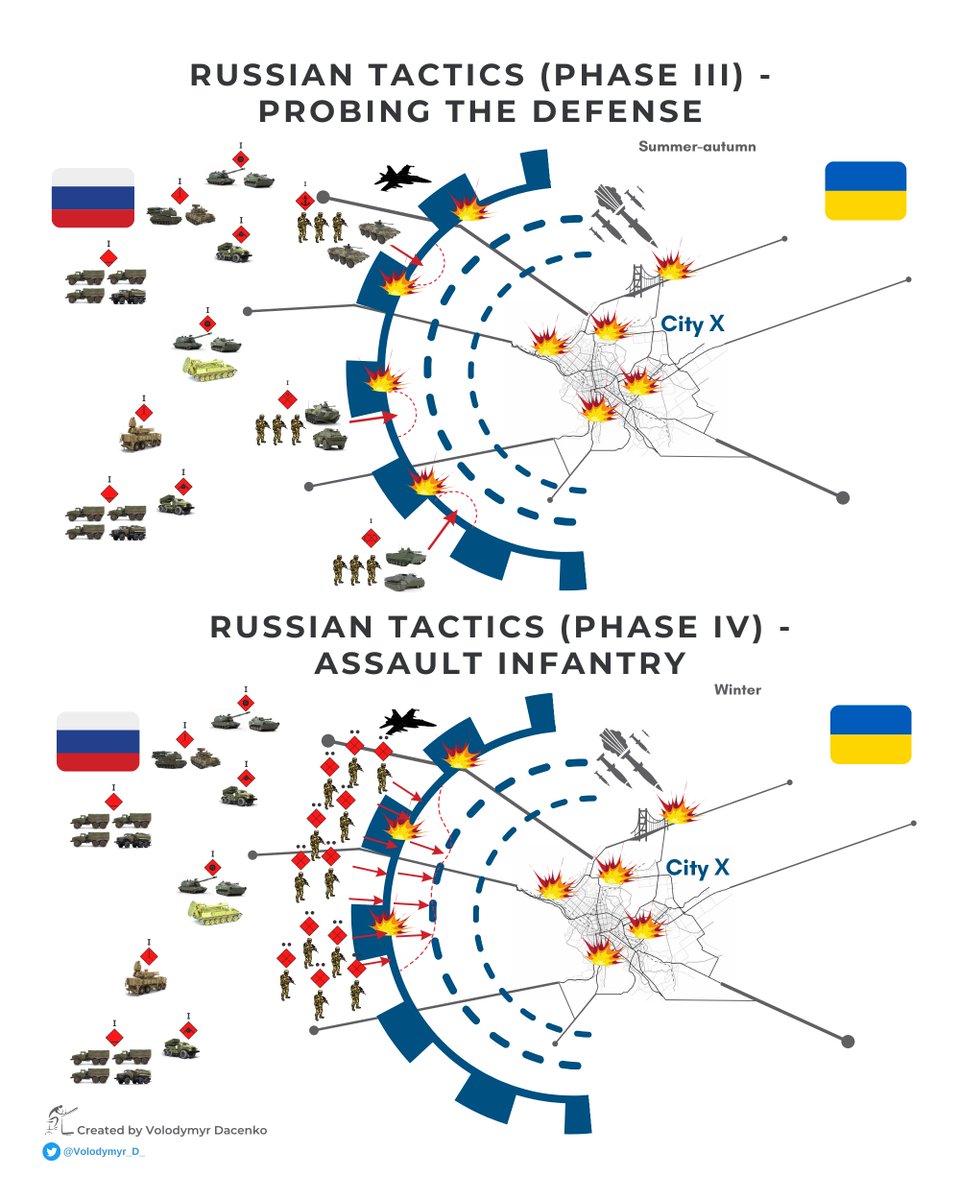
We all see many statements about war losses that are difficult to put together.
How can Ukraine lose 5 times fewer killed and at the same time the total number of losses is called 200K/120K in Ru/Ua?
I will try to explain it briefly:
#RussiaUkraineWar #RussianArmy
1/14
How can Ukraine lose 5 times fewer killed and at the same time the total number of losses is called 200K/120K in Ru/Ua?
I will try to explain it briefly:
#RussiaUkraineWar #RussianArmy
1/14
2/14
1. Different ratio of killed/wounded
In the Russian army, the ratio of killed/wounded troops is usually called 1/3. In the Ukrainian army - 1/7-1/8, and sometimes even as much as 1/10 or more.
There is a great point @shashj about this:
1. Different ratio of killed/wounded
In the Russian army, the ratio of killed/wounded troops is usually called 1/3. In the Ukrainian army - 1/7-1/8, and sometimes even as much as 1/10 or more.
There is a great point @shashj about this:
https://mobile.twitter.com/shashj/status/1628072018141761536
3/14
2. Different types of troops
When they talk about the losses of the Russian army, they usually mean the regular troops of Ru. But in addition, more than 50K "LDNR", 50K "Wagner", and several thousand volunteer battalions such as "Bars", "Rusich" and others.
2. Different types of troops
When they talk about the losses of the Russian army, they usually mean the regular troops of Ru. But in addition, more than 50K "LDNR", 50K "Wagner", and several thousand volunteer battalions such as "Bars", "Rusich" and others.
4/14 For Ukraine, not only the AFU takes part in the battles. But also the National Guard, border guards, and special forces. For example, the "Azov" regiment, which defended Mariupol, belongs to the NG. And the 3rd separate assault brigade "Azov" is part of the AFU.
5/14Therefore, when we hear statements about losses, we must take into account that we can only be talking about one type of military formation and not general losses.
6/14 The probable loss of 200K is indicated only for the regular army of the RF (RFA). And Ru's total losses amount to about 300K or more (since Russia primarily uses the Wagner and the "LDNR" as cannon fodder).
7/14
3. Various dates
Very often, intelligence data that is published has a significant time delay. For example, in early January, US officials talked about the losses of "Wagner" as 4,100 killed and 10,000 wounded. And already in February, the White House said about 30K
3. Various dates
Very often, intelligence data that is published has a significant time delay. For example, in early January, US officials talked about the losses of "Wagner" as 4,100 killed and 10,000 wounded. And already in February, the White House said about 30K
8/14 It is unlikely that losses of "Wagner" have doubled in a month. Most likely, the first data were behind in time whitehouse.gov/briefing-room/…
9/14
4 Data of the General Staff of the AFU
Many do not trust Ua's data on Russian losses. And to really determine the exact number of killed enemies on the battlefield is almost impossible.
4 Data of the General Staff of the AFU
Many do not trust Ua's data on Russian losses. And to really determine the exact number of killed enemies on the battlefield is almost impossible.
10/14 But I've been following various reports of equipment loss for a year now. And usually, the data of Western intelligence is somewhat closer to the data of the AFU than to the data of Oryx.
11/14 For example, when the US announced the destruction of 1000 Russian tanks in May, the Oryx counter was at 600+, and the ZSU counter showed 1200+ edition.cnn.com/europe/live-ne…
12/14 Probably the number of Russians killed is less accurate than the number of destroyed tanks. But I would say that these numbers have sufficient accuracy to determine the general dynamics of the war and the intensity of the fighting.
13/14 Mark Milley recently spoke of 1,200 Russians killed at Bakhmut in one day. In the reports of the General Staff, the maximum figure is 1,100 on the entire front line. So sometimes the data of the Armed Forces may be even lower than the reports of US officials.
14/14 Also some thoughts on the official data of the ZSU from @TrentTelenko
https://mobile.twitter.com/TrentTelenko/status/1635794774656532481
• • •
Missing some Tweet in this thread? You can try to
force a refresh












